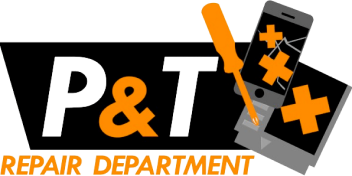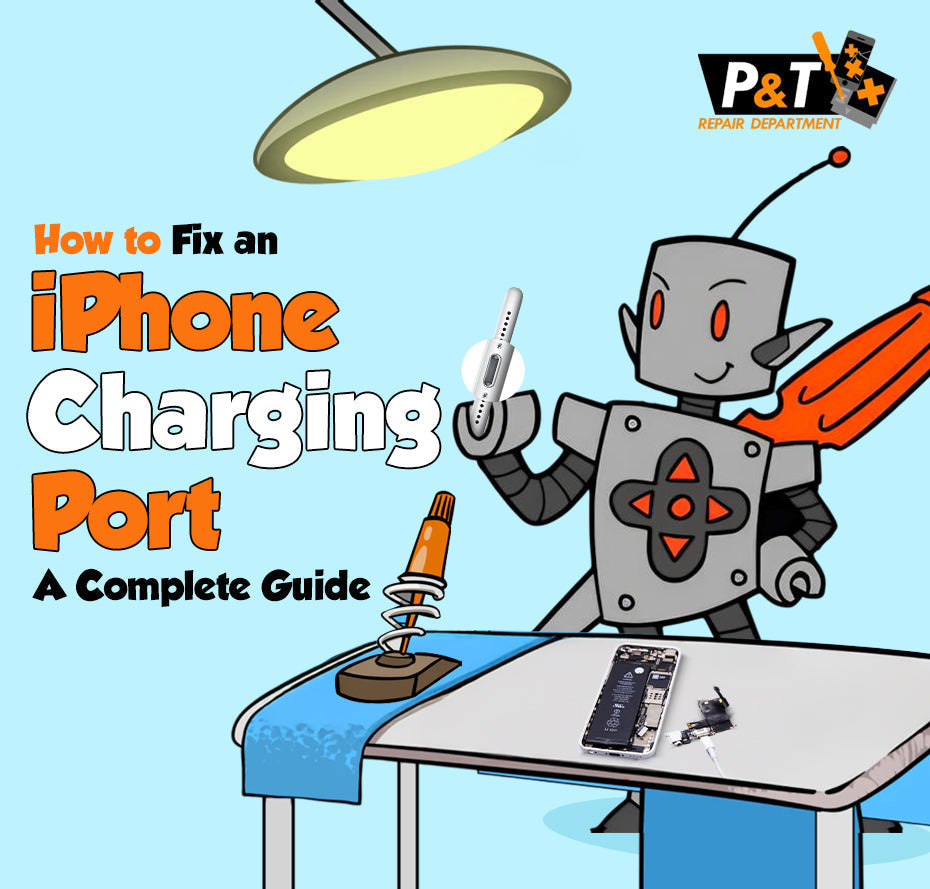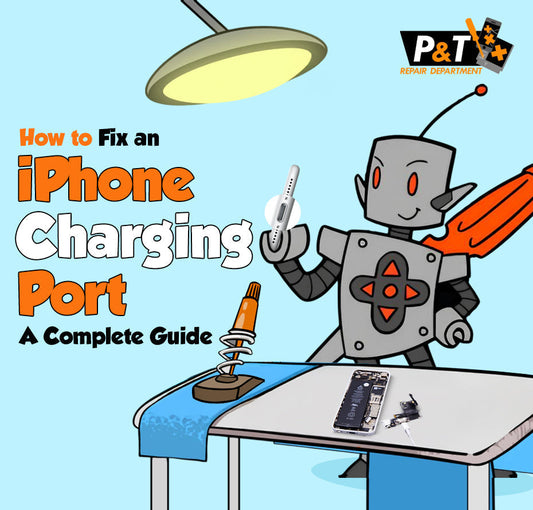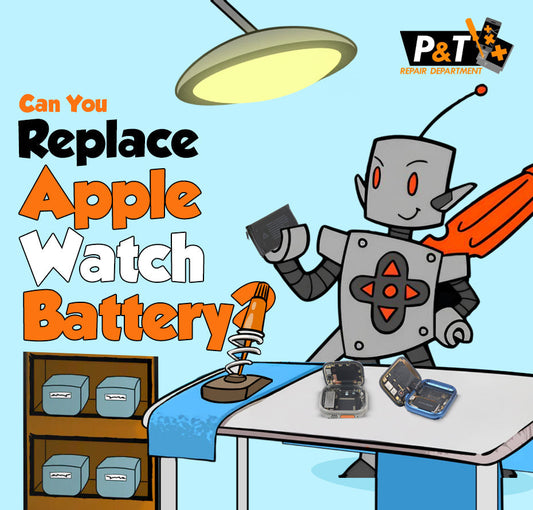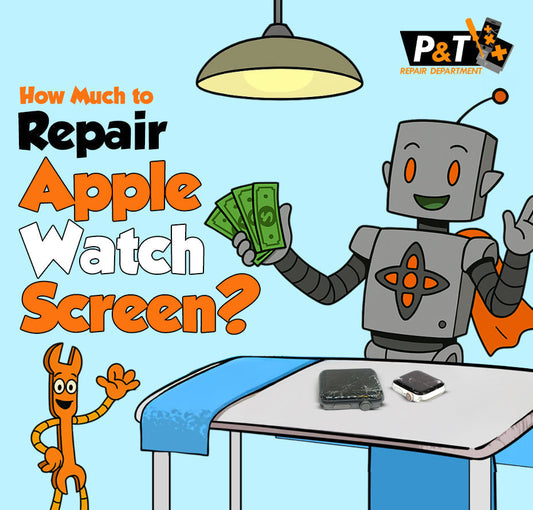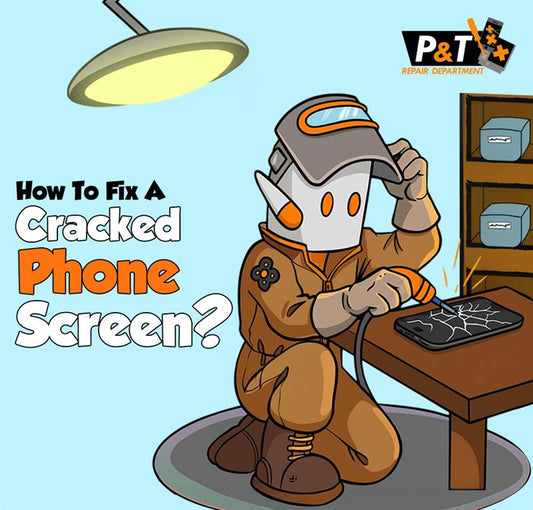You have put your iPhone to charge at 60% battery. After an hour, when you check the device, it is 61%. Sound familiar? When something like this happens, two possible questions usually cross a person's mind:
• Do I need to get a new iPhone?
• Is the charging port causing the issue?
What to do? To primarily check the root cause, you can try charging your iPhone with an alternative charger. If you notice the same problem, then the issue is your iPhone charger point.
You can either perform DIY tips to fix the charging point or take the adapter and cable to professionals. While DIY is a cost-effective option, it is successful only when you have the right tools and techniques to fix the charging port.
Have no idea about the repair techniques? Then seek professional help. From this blog, you will get to know how to fix an iPhone charging port. Additionally, you will also learn the causes of charging port problems for your iPhone.
Key Takeaways
1. The problems with the iPhone charging port can interfere with the optimal performance of the device.
2. Accumulation of dust particles, physical damage, the use of non-certified accessories, and software glitches can create issues with the iPhone's charging port.
3. To restore the device's performance, consider fixing the iPhone charging port. Clean the charging port outlet, update your device, and use Apple-certified accessories to restore the charging port.
4. Take the device to professional technicians if the steps don't resolve the issue with the charging port.
Primary Causes of iPhone Charging Port Issues
There's nothing worse than the time when your iPhone's charging port refuses to cooperate. You may hold the cable in the right spot and wiggle the cord, but nothing works. Yes, that feeling is rather disappointing. However, you first need to understand the issue with the charging port.
Before reaching for solutions to "how to fix iPhone charger port?", understand the primary causes of iPhone charging port problems, which are as follows:
Physical Damage:
Accidental falls or water-damaged iPhones can be a significant cause of iPhone charging port issues. These accidents can reduce the port's longevity and lead to the loosening of pins inside the port.
Dust and Other Particles:
The accumulation of dust, lint, and debris can result in iPhone charging issues. Owing to a clogged surface, the charger and port may lose connection. It is in such a circumstance that the iPhone refuses to take charge.
Using Non-Certified Accessories:
iPhones are always compatible with Apple accessories. Using non-certified charging cables and adapters can cause damage to the iPhone's charging port. The cable you're using may not match your iPhone's specifications, which can cause compatibility issues.
System Glitches and Software Bugs:
iPhones are sophisticated devices, yet they are not immune to software glitches. Typically, a glitch or bug in the iOS can cause issues even in the charging port. In addition, the frequent and mandatory updates can also impact the battery life of your iPhone and compromise charging port capabilities.
Things to Keep in Mind Before Fixing an iPhone Charging Port
Before you learn how to fix the charging port on an iPhone, there are certain factors you need to keep in mind. These factors are as follows:
1. Back Up Your iPhone Data:
Repairing the charging port of your iPhone can take some time, depending on the model, the damage, and the repair process. Typically, a DIY fix takes longer than a professional repair. Nonetheless, you must back up all your files and data before considering a repair for the charging port.
2. Keep Your Charging Area Clean:
The dust and lint accumulation in the charging port can cause charging issues. To ensure that the charging port is free from dust, lint, and debris, regularly clean the charging area.
Step-by-Step Guide to Fix iPhone Charging Port
If you find that your iPhone is causing problems with the charging port, there are several steps you can take to address these issues. Here is a step-by-step guide you can follow to fix the charging port issues:
Check the Charging Port and Clean Dirt and Debris
1. Use a flashlight and inspect the iPhone charging port.
2. When you spot dust and lint, use a toothbrush to clean the charging port externally.
3. For the internal part, use a cotton swab and carefully remove the dust and debris.
Use Another Certified Charging Cable and Adapter
1. Check signs for frayed charging cables or bent prongs.
2. When you see damage in the charging cables, replace them with new, certified accessories.
3. Using Apple-certified accessories will keep the device safe and functional.
Try to Restart Your iPhone
1. Software glitches can interfere with charging issues. To avoid the problems, restart your iPhone.
2. You can go to the power option and hit the restart button.
3. Alternatively, you can switch off the phone, wait for a few seconds, and turn it back on.
Update iOS Software
1. Pending software can slow down the charging process for the iPhone. For that reason, keep your device up-to-date.
2. You will get notifications for software updates, and then you can continue with the process.
3. Otherwise, you can go to Settings > General> Software Update. When an update is available, follow the instructions and install it.
Reset Settings
1. Try to reset the settings. To initiate the process, first back up your files.
2. Go to Settings > General > Reset > All Settings.
3. Your iPhone will revert to its default settings, potentially resolving software-related issues.
Get Help from a Professional Technician
1. Have you tried everything, and still the charging port issue persists? Now only a professional technician can help.
2. A professional technician will have the knowledge and skills to repair the charging port of your iPhone.
3. Through testing tools, they will identify the issues with iPhone charging and provide a prompt solution.
Other Helpful Tips for Charging Port Issues on iPhone
The guide mentioned above is likely to restore your iPhone's charging port problems. If the issues persist, you can try these handful of tips:
1. Use MFi-Certified Chargers and Cables: For enhanced safety and compatibility, use MFi-certified chargers and cables.
2. Prevent Exposure to Moisture: To ensure your iPhone's charging port is in good health, keep the device dry and moisture-free.
3. Keep Charging Port Clean: Routinely check and clean your device's charging port to prevent dust and debris build-up.
Ensure Hassle-Free iPhone Charging With Professional Help
You have tried all the possible hacks to fix the charging port of your iPhone. But it's still not working, and you are wondering how to fix an iPhone charging port. Well, now there is no time to overthink and get professional help.
There are some critical issues that you may not understand, but a technician would certainly know. While rushing to the Apple Store is a good idea, it is also an expensive one.
As a cost-effective method, you can rely on third-party repair services. They will use standard parts and techniques to get your device into its optimal condition.
For a quick iPhone charging port repair, you can contact professionals from the P&T Repair Department. They will thoroughly inspect your device and ensure a quick and hassle-free repair process. When it comes to price, the range is more affordable than you might expect.
Frequently Asked Questions (FAQs)
1. How Do I Know if My iPhone Charging Port Is Damaged?
When the charging cable slips out of the port, it could be a sign of a damaged charging port. Besides, device overheating and slow charging are the top signs of a damaged iPhone charging port.
2. Why Is My iPhone Still Not Charging After Replacing the Cable?
After changing the cable, if your iPhone still refuses to charge, it may be due to an issue with the charging port. A cracked iPhone screen or repeated exposure to water can cause the charging port to wear down. It becomes essential to fix the cracked phone screen, provided that's the issue.
3. Can I Repair a Damaged iPhone Charging Port on My Own?
There could be various reasons for the iPhone's slow charging. Perhaps you're not using Apple-certified chargers and cables, or maybe your charging port is causing the problem. Another issue could be that the iPhone's battery is causing problems.
4. Why Does My iPhone Get Hot While Charging?
iPhones have Li-ion batteries, which are a great source of heat. When charging, it is normal for your iPhone to get hot as the process lets the batteries generate heat. However, excessive heat could be a sign of battery problems, a damaged charging port, or the entire device.
